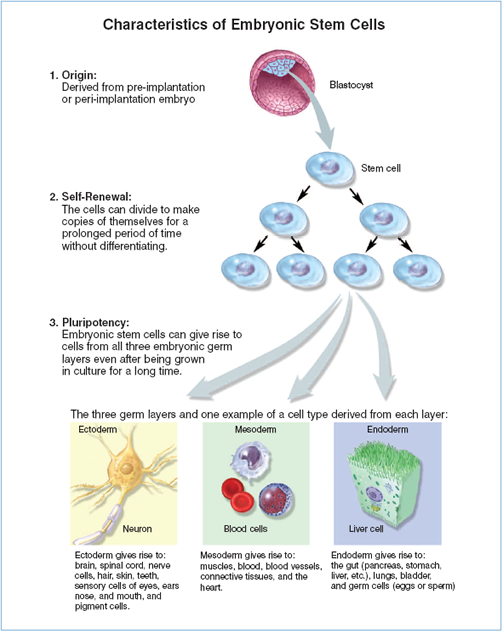Christopher Reeve's accident, subsequent paralysis and death are well publicized.What is the controversial cell-based procedure, considered immoral by some, that has been proposed to replace his damaged neurons? How would it work?
1 Answer
Reeve suffered a spinal cord injury(SCI): post-traumatic treatment for such condition may involve stem cell therapy.
Debatable ethical issues related to this are country specific.
Explanation:
Actor Christopher Reeve suffered a debilitating neck injury in 1995 when he fell from his horse, head first, during a show jump event-- which left him paralyzed from neck down till he died almost ten years later.
After the accident Reeves became very aware about his clinical condition and started to promote such biological research which may one day help him to walk again. Stem cell therapy, where pleuripotent cells are harvested from early stage embryo and injected in the body of the affected individual, held some promise.

Embryonic stem cells can proliferate continuously and can differentiate in any cell type of the body. Thus there is an immense opportunity to treat degenerative diseases by transplanting such embryonic cells.
For example, in the brain of a person with Parkinson's disease there is decreased production of neuroinhibitory chemical Dopamine. Researchers are studying positive effects of stem cell therapy by transplanting newly generated dopamine producing cells in brain of such patients.
- Now please consider these facts: that such embryos come from IVF clinics, and that the embryo is destroyed in the process. So before a clinic donates embryos for harvesting of stem cells, it must seek an informed consent from the biological/legal parents.
- To avoid such legal ramifications, scientists took cue from research on cloning: embryos are now generated by inserting diploid nucleus (taken often from a cell of the patient) in a matured enucleated egg.
- Though human cloning is banned almost in all countries, cloning for harvesting of stem cells used in therapeutic purpose is allowed in most. Even then there are other unresolved issues, such as over-promising by doctors or over-expectations by patients .
So all aspects of stem cell research and therapy come under the purview of bioethics: it is important to strike a balance between demands of natural justice and aspiration of scientific achievement.
It is important to note that spinal cord injuries are treated by multipotent cells collected from patient's own bone marrow (injected in injured spinal cord site) or by embryonic cells derived from umbilical cord tissue.
Such cells may improve motor activity of the patient with SCI, but extent of damage in SCI varies widely and thus results could be promising in one case but may not be so in others.
Umbilical cord is a potential source of undifferentiated embryonic cells and hence companies have come up which store such tissues (=cord tissue banking) for future use: in case the person needs stem cell therapy for degenerative/genetic conditions.
Scientists are also studying potentiality of embryonic cells derived from amniotic fluid.
Japanese workers have shown in 2006 that an adult cell could be genetically manipulated to turn on pleuripotent condition in the cell.
